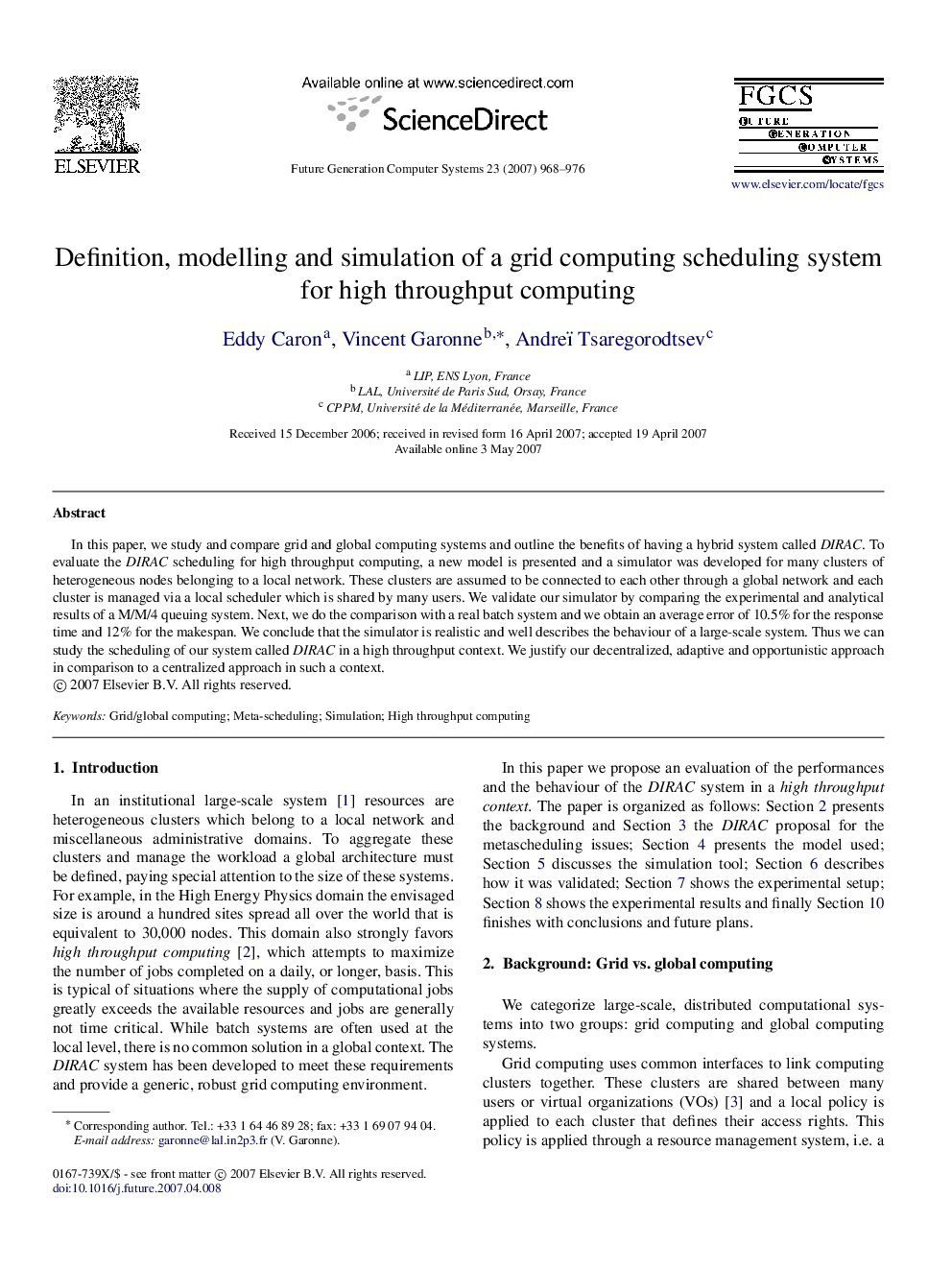| Article ID | Journal | Published Year | Pages | File Type |
|---|---|---|---|---|
| 425733 | Future Generation Computer Systems | 2007 | 9 Pages |
In this paper, we study and compare grid and global computing systems and outline the benefits of having a hybrid system called DIRAC. To evaluate the DIRAC scheduling for high throughput computing, a new model is presented and a simulator was developed for many clusters of heterogeneous nodes belonging to a local network. These clusters are assumed to be connected to each other through a global network and each cluster is managed via a local scheduler which is shared by many users. We validate our simulator by comparing the experimental and analytical results of a M/M/4 queuing system. Next, we do the comparison with a real batch system and we obtain an average error of 10.5% for the response time and 12% for the makespan. We conclude that the simulator is realistic and well describes the behaviour of a large-scale system. Thus we can study the scheduling of our system called DIRAC in a high throughput context. We justify our decentralized, adaptive and opportunistic approach in comparison to a centralized approach in such a context.
